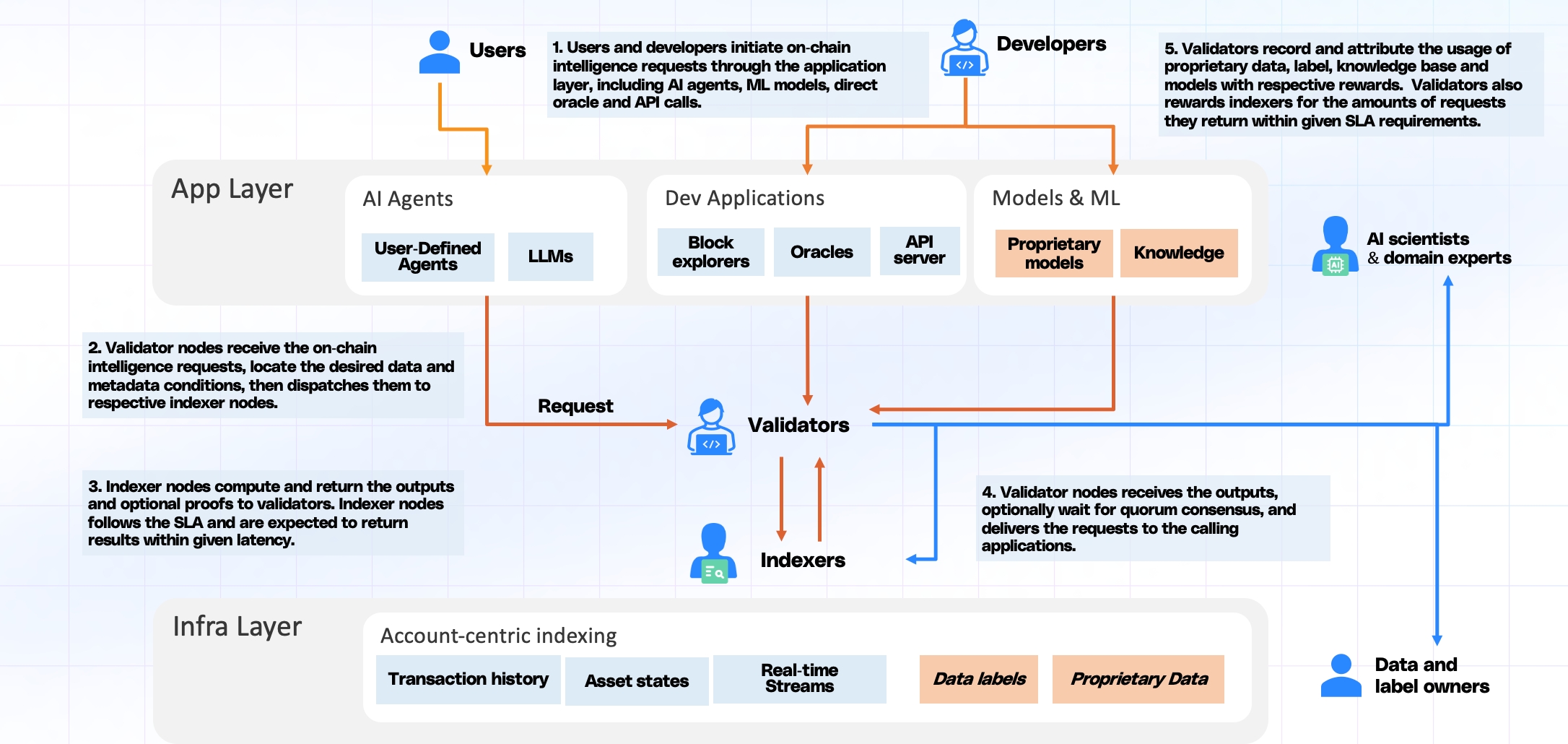Network Roles
The Hemera Network mainly consists of Indexers, Validators, as well as proprietary models & knowledge owners, along with proprietary data owners and labellers.
Indexers, Validators and Inference Nodes serve as the primary computing resource providers, offering crucial data and inference access to developers and servicing the network.
Proprietary models & knowledge and proprietary data & labels are network artifacts contributed by AI scientists, domain experts, data owners and label providers. They empower the Hemera Network with AI & Machine Learning capabilities.
Consumers encompass both end users, who utilize Dapps, and developers, who build them. Both groups consume the data and intelligence provided by Hemera.
End users engage directly with the Hemera Network via user-defined AI agents available in the SocialScan Agent Store. Through the use of $DAY tokens, users acquire on-chain intelligence from these AI agents. The Agent Store offers a toolkit that enables anyone to configure and personalize AI agents with their specific expertise in on-chain intelligence. This capability enables end users to meet the majority of their requirements for accessing on-chain intelligence.
Hemera Network provides performant on-chain data services that developers require to build a variety of applications, spanning from essential tools such as block explorers, oracles, and data APIs, to more advanced functionalities enabled by AI models.
To ensure the economic security of the Hemera Network, maintain the integrity of queried data and intelligence, and distribute rewards for network contributions, participants stake and utilize Hemera Tokens ($DAY). DAY serves as a utility token powering the network.
Active Indexers, Validators, Inference node clients, proprietary models & knowledge owners, and proprietary data owner & labeller can earn rewards from the network. See Figure below
